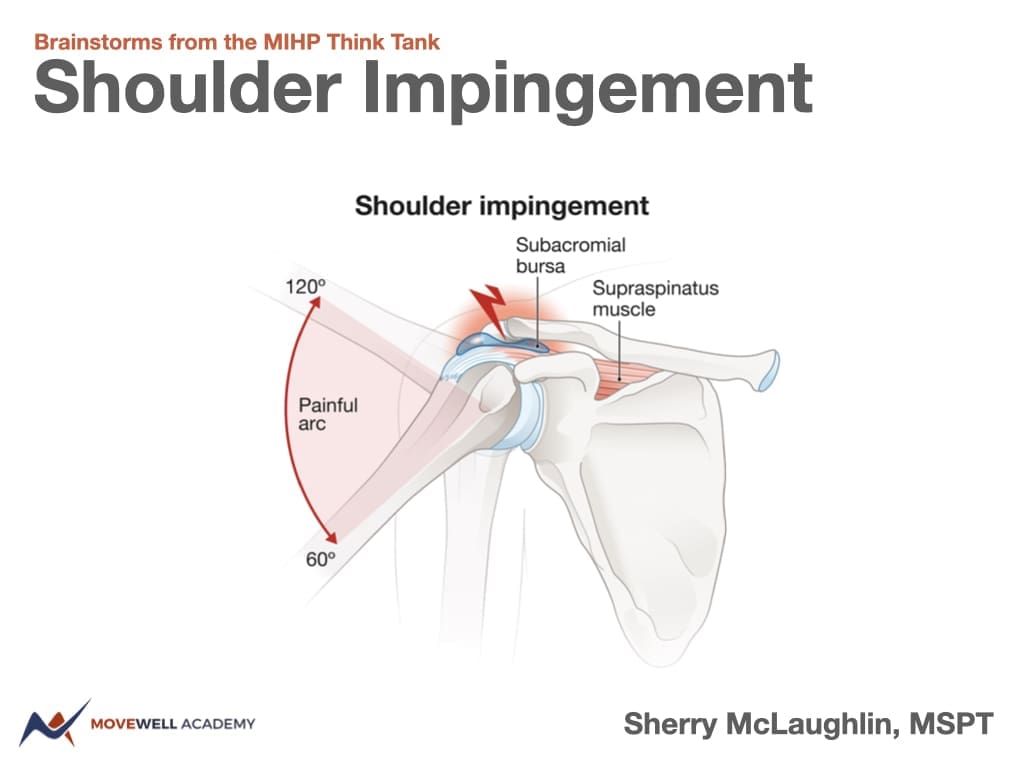Muscle minute Tuesday – A shoulder jammer – Meet the posterior deltoid

Wait one second. Now we’re just going to talk about one portion of one muscle?
That’s right. The posterior deltoid is a muscle a lot of us know should be stretched but maybe don’t understand exactly why. And once you gain a real understanding of this muscle and how it normally shows up in our shoulder patients, it just may change the course of your treatments. Let’s get started.
| Origin | spine of the scapula |
| Insertion | deltoid tuberosity (humerus) |
| Action | extension, external rotation and horizontal abduction of the humerus OR protraction of the scapula |
| Innervation | axillary n. (C5, C6) |
| Antagonists | anterior deltoid, biceps brachii, rhomboid |
The Real World Posterior Deltoid
Wait. This muscle is a protractor of the scapula?! The anatomy books never said that. That’s because anatomy books describe a muscle’s origin as the most proximal point, its insertion as the most distal point and the action as what happens when the insertion moves towards the origin.
In reality, when the nervous system sends its signal and a muscle contracts, it has no idea which end is which. When a muscle contracts, THE LIGHTER END MOVES. So what does this mean for our shoulder patients?
One of the primary complaints of people with rotator cuff tendonitis or impingement is a pinch at the top of the shoulder with end range arm elevation or horizontal adduction. And two most common scapular positions in these patients are elevation and/or protraction. They won’t often tell you this because short/tight muscles don’t cry out in pain, but if you dig deep into the posterior shoulder region, you will often find a trigger point in the posterior deltoid. Here’s a short list of why this matters:
- If the posterior deltoid is short/tight, the anterior deltoid will be weak. This is often exhibited as pain/weakness with resisted shoulder flexion
- If the posterior deltoid is short/tight, the rhomboid may be weak. This causes excessive protraction of the scapula and possible scapular winging
- Protraction of the scapula causes compensatory anterior migration of the humeral head, increasing chances of anterior shoulder pain due to over lengthening of the biceps long head tendon.
Conventional thinking says: Stretch the posterior deltoid (or all of the deltoid for that matter) because it’s good for your shoulders.
Real World Thinking says: The posterior deltoid isn’t tight because the humerus is externally rotated, extended or horizontally adducted. That isn’t how our shoulder patients present. Then why is it so tight?! Because the scapula is protracted. This is a call to:
- release the posterior deltoid trigger point
- activate the rhomboid
As a side note, I found this article talking about the importance of posterior shoulder stretching in patients with subacromial impingement. They concluded modifications were needed to avoid impingement during the stretch that is beneficial in to avoid impingement. Maybe the secret to proper mechanics with posterior shoulder stretching lies in releasing the posterior deltoid first. Hmm…
That’s it! For a more in-depth look at what can cause shoulder impingement, take our Shoulder Impingement Course.
Because nobody has time to be in pain.
Until next time…

Kind Regards,
MoveWell Academy
[email protected]












 Daily Dozen Cyclist
Daily Dozen Cyclist 

